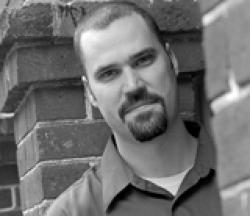On August 11, Nobel Laureate Günter Grass revealed that he had not been a member, as he had always maintained, of the so-called Flakhelfer generation—the name given German youths conscripted into low-level antiaircraft positions in the late days of the Third Reich—but rather a member of the elite Waffen-SS. He had served as a gunner with the 10th SS Panzer Division Frundsberg from the time he was called up in October 1944 until the division’s surrender in May 1945. From that point forward, however, Grass misrepresented his wartime service, while at the same time becoming an ever more outspoken critic of the German government, which, ironically, he felt was too slow to acknowledge and make amends for its Nazi past. In 1959, he published his brilliant novel The Tin Drum—the first of his celebrated Danzig Trilogy, which draws from Grass’s childhood in the Free City of Danzig (renamed Gdansk after the war). Now, in light of Grass’s admission, Lech Walesa, a fellow Nobel Laureate and former president of Poland, was calling for Grass to lose the honorary citizenship he was awarded to Gdansk (considered by many to be the place where the Holocaust began), and has threatened to surrender his own citizenship there if Grass is not so stripped. “If we had known Grass was a member of the SS, he probably would not have been made an honorary citizen of Gdansk,” Walesa told Poland’s TVN24 news channel. “We granted citizenship to a different Grass.” The whole episode was a reminder of the lasting legacy of the Holocaust—the extent to which it lingers in collective memory, the extent to which it remains unreckoned.
In this issue, we have assembled four of our favorite writers, each taking his own perspective on the Holocaust. Tony Kushner’s wrenching short play But the Giraffe! was written as a curtain raiser for Hans Krása’s children’s opera Brundibár. Composed in the early years of World War II, Brundibár was smuggled by its conductor, Rudolph Freudenfeld, into the Terezin concentration camp where the opera was performed more than fifty times by the children of the camp. It is an inspiring story but also a complex one—as film of one of the performances was used by Nazi propagandists to show how happy Jews were in the camps. Kushner’s play confronts this hard reality, the double-edged sword of remembrance and forgetting. Brundibár is rescued from destruction, but its rescuers are not so fortunate.
In the latest installment of his ongoing work Portrait of the Artist as a Young %@?!, Art Spiegelman explores the legacy of the Holocaust and how he came to create his Pulitzer Prize-winning Maus. In one scene, Spiegelman’s work becomes a bridge to his Auschwitz-survivor father, but in another its monstrous, fire-breathing specter—featured on our cover—terrifies Spiegelman’s son as it bursts from an heirloom chest, still dressed in the uniform of the concentration camps, its belly transformed into a shark-toothed maw expelling the fork-tongued head of Hitler. It is the very embodiment of terror and raises the question of when the descendents of survivors will ever be able to escape their haunted pasts.
Lawrence Weschler travels to Berlin to see Peter Eisenman’s grand-scale Memorial for the Murdered Jews of Europe. When he arrives, he finds the memorial turned into a de facto playground by unthinking schoolchildren. Is their innocent ignorance of the memorial’s significance a good or bad sign, a symptom of cultural amnesia or the breeding ground for history to repeat itself? Weschler sees it from both sides.
Finally, Michael Chabon presents an exclusive first-look at his new novel, The Yiddish Policemen’s Union. More than a mere work of fiction, the novel is a counterfactual experiment imagining a different outcome for post-Holocaust Jews. “It is the year 2000,” Chabon explains, “but the world is not as we now know it. Israel does not exist, and Alaska is not—quite—Alaska.” Inspired by FDR’s short-lived wartime plan to create a Jewish homeland in Alaska, Chabon’s novel presents a world in which a ravelled strip of the fiftieth state, instead of the former Palestine, serves as a refuge for dislocated Jews. The novel—and excerpt published here—is, at heart, a great detective story in the style of Raymond Chandler. (Chabon’s title for the excerpt is a winking reference to Chandler’s story “The King in Yellow.”) Nevertheless, the ghost of the Holocaust pervades.
And so it does here in the real world. As we go to press, Israel and Hezbollah maintain an uneasy calm after more than a month of missiles fired across Lebanon’s southern border. The Lebanese government officially disavows Hezbollah but also refuses to acknowledge the existence of Israel. If any evidence were needed of how tenuous peace is, it came early in the ceasefire when a shepherd and his flock crossed the UN-established Blue Line and nearly triggered a resumption of hostilities. Meanwhile, in Tehran, an exhibition opened of more than two hundred Holocaust cartoons, intended as an angry response to the Mohammed cartoons published in Jyllens Posten last year. At the same time, Islamic extremism was explicitly linked with Nazism when President Bush referred to our war against “Islamic fascists”—a term quickly embraced by William Kristol, Mary Matalin, and Rick Santorum. Those on the American left justifiably objected—without noting that the term had been popularized by its one-time knight Christopher Hitchens.
If we do nothing else by assembling this group of outstanding artists to revisit the Holocaust, we hope to strip away the rhetoric. History can be our guide but only if we view it clear-eyed. With political and religious fervor at a near-boil, such reflection may be too much to expect, but we are reminded in this issue that artists are the conscience of their people. That is what made Günter Grass’s revelation so devastating. It is not what he did during World War II that shocked his friends and admirers, it was his lack of moral courage—his suppression of facts, his silence—every day thereafter.







